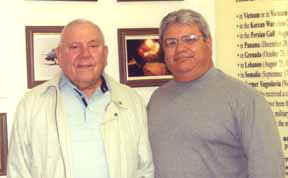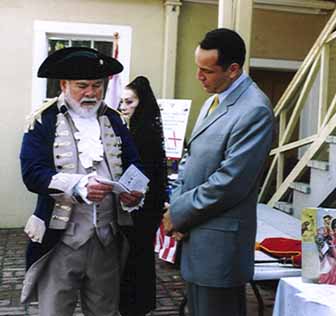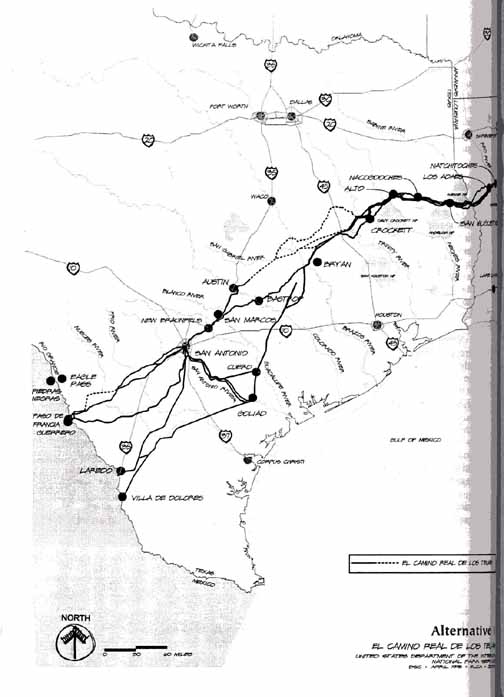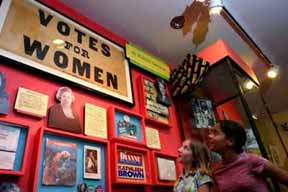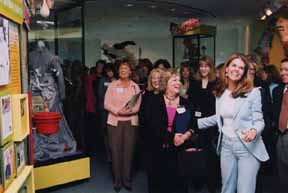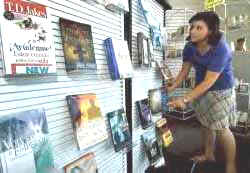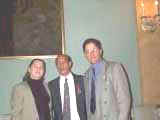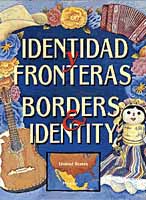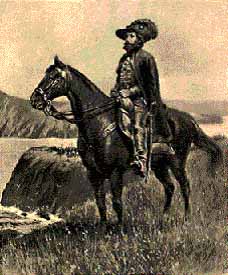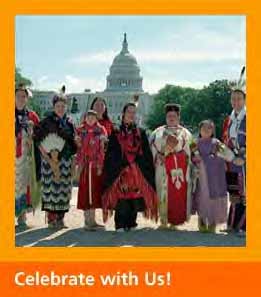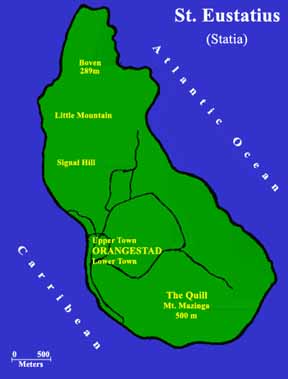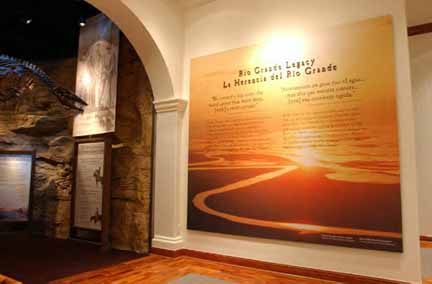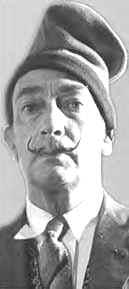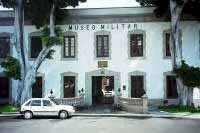|
Generation No. 1
1.
CAPTAIN SIMON-FRANCISCO3 DE AROCHA
(FRANCISCO-JOSEPH2,
SIMON1)
was born November 03, 1731 in San Fernando, San Antonio, Bexar County,
Texas, and died July 29, 1797 in San Antonio, Bexar County, Texas. He
married MARIA-IGNACIA DE URRUTIA1
January 29, 1751/52 in San Antonio, Bexar County, Texas, daughter of
JOAQUIN DE URRUTIA and MARIA-JOSEFA HERNANDEZ-LONGORIA. She was born Abt.
1735 in San Antonio, Bexar County, Texas1,
and died April 27, 1812 in San Antonio, Bexar County, Texas1.
Notes for CAPTAIN
SIMON-FRANCISCO DE AROCHA: In
1774, Simon served both as Lieutenant Governor of the province and
commander of the town militia. Source: From the books, San Antonio
de Bexar by Jesus F. De La Teja, and Tejano Origins in Eightreen-Century
San Antonio, edited by Gerald E. Poyo and Gilberto M. Hinojosa.
On his wife's will, he is listed
as Commander of the corps of Militia of Texas. ( Maria Ignacia de
Urrutia's will can be viewed in the May, 2004 issue of Somos Primos.)
Simon Francisco de Arocha is listed as a farmer on the 1793 - San
Antonio de Bexar census. He is listed as Captain on Juan Andres Travieso
will, dated April 10, 1783, San Antonio, Texas. Source: Wills and
Inventories of Bexar County, Texas - San Antonio Genealogical and
Historical Society.
Children of SIMON-FRANCISCO DE
AROCHA and MARIA-IGNACIA DE URRUTIA are:
2. i.
JUAN-FRANCISCO4 DE AROCHA, b. March 15, 1753, San Antonio,
Bexar County, Texas; d. Bef. 1814, Executed at Monterrey, Nuevo Leon,
Mexico.
ii.
TOMAS DE AROCHA, b. Abt. December 1753, San Antonio, Bexar County,
Texas; d. December 1753, San Antonio, Bexar County, Texas.
3. iii.
ANA-MARIA-GERTRUDIS DE AROCHA, b. August 23, 1754, San Antonio, Bexar
County, Texas; d. June 23, 1830, San Antonio, Bexar County, Texas.
4. iv.
TOMAS-ANTONIO-DE-LA-TRINIDAD DE AROCHA, b. November 15, 1756, San
Antonio, Bexar County, Texas.
v.
JOSEFA-GERTRUDIS-DE-LA-TRINIDAD DE AROCHA, b. November 06, 1758, San
Antonio, Bexar County, Texas; d. November 13, 1758, San Antonio, Bexar
County, Texas.
5. vi.
JOSE-MIGUEL-DAMIAN-DE-LA-TRINIDAD DE AROCHA, b. September 16, 1759, San
Antonio, Bexar County, Texas.
vii.
BARBARA-GUADALUPE DE AROCHA, b. December 04, 1761, San Antonio, Bexar
County, Texas; d. Died young.
viii.
FATHER JOSE CLEMENTE DE AROCHA, b. 1764, San Antonio, Bexar County,
Texas; d. Laredo, Webb County, Texas.
Notes
for FATHER JOSE CLEMENTE DE AROCHA: Native
of San Antonio, he was a Roman Catholic Priest who studied in Mexico
City for the priesthood.
After his studies, he served as local pastor at the San Fernando
Cathedral, San Antonio, Texas. He is listed as 27 year of age on
the 1790 census of San Antonio. He was quite active in the revolutionary
movement of 1811-1814, and subsequently he was transferred to Laredo in
1811. Source:The Handbook of Texas Oline and San Antonio de Bexar
by Jesus F. De La Teja.
6. ix.
CADET JOSE-IGNACIO-DE-LA-CANDELARIA DE AROCHA, b. January 31, 1766, San
Antonio, Bexar County, Texas; d. April 29, 1842, San Antonio, Bexar
County, Texas.
Generation
No. 2
2.
JUAN-FRANCISCO4 DE AROCHA
(SIMON-FRANCISCO3,
FRANCISCO-JOSEPH2,
SIMON1)
was born March 15, 1753 in San Antonio, Bexar County, Texas, and died
Bef. 1814 in Executed at Monterrey, Nuevo Leon, Mexico. He married (1)
MARIA-MANUELA MONTES-DE-LA-PENA, daughter of JUAN-JOSEPH-FRANCISCO
MONTES-DE-OCA and MARCELA DE-LA-PENA-CASTRO. She was born April 18, 1748
in San Fernando, San Antonio, Bexar County, Texas. He married (2) MARIA-JOSEFA
NUNEZ-FLORES July 15, 1779 in San Fernando, San Antonio, Bexar County,
Texas, daughter of MANUEL NUNEZ-FLORES. She was born 1757 in San
Antonio, Bexar County, Texas, and died in San Antonio, Bexar County,
Texas.
Notes for JUAN-FRANCISCO DE
AROCHA: Christening on March
23, 1753, San Fernando Catholic Church, San Antonio, Texas. For his part
in the revolutionary movement of 1811-1814, he was taken to Monterrey
for execution.
Children of JUAN-FRANCISCO DE
AROCHA and MARIA-JOSEFA NUNEZ-FLORES are:
i.
JOSE-NEPOMUCENO-BARNARDO5 AROCHA-NUNEZ, b. August 28, 1785,
San Fernando Cathederal, San Antonio, Bexar County, Texas.
Notes
for JOSE-NEPOMUCENO-BARNARDO AROCHA-NUNEZ: He is listed on the
1830 Census of San Antonio,Texas. From the book 1830 Citizens of Texas
by Gifford E. White. Page 109.
7. ii.
MARIA-TERESA-DE-JESUS AROCHA-NUNEZ, b. October 21, 1800, San Fernando
Cathederal, San Antonio, Bexar County, Texas; d. August 30, 1876, Villa
de Pesqueria Chica, Nuevo León, México..
3.
ANA-MARIA-GERTRUDIS4 DE AROCHA
(SIMON-FRANCISCO3,
FRANCISCO-JOSEPH2,
SIMON1)
was born August 23, 1754 in San Antonio, Bexar County, Texas, and died
June 23, 1830 in San Antonio, Bexar County, Texas. She married
JOSE-JOAQUIN LEAL-DELGADO Abt. 1770, son of BERNARDO LEAL-HERNANDEZ and
LEONOR DELGADO-MELANO. He was born 1738 in Villa de San Fernando, Bexar
County, Texas, and died 1813 in Shot at Fort Trinidad, East Texas.
Notes for JOSE-JOAQUIN
LEAL-DELGADO: Joaquin
Leal, born 1745, was the son of Bernardo Leal and Leonor Delgado, who
came from the Canary Islands and founded this city of San Antonio, which
they originally named Villa of San Fernando in March 9, 1731. His
grandfather, Juan Leal, was 56 years old a widower when he arrived here
in 1731, and married the widow Delgado. Juan Leal was the first Mayor of
this city and the first Judge. He came from the Island of Lancerote,
Canary Islands. They had been in that island since 1460 where they came
from the mainland of the Southern Part of Spain. All the men were given
the title of "Hidalgo" which title still carries to all their
male descendants and are considered "Knights of the Frontier".
Joaquin married Ana Maria Arocha, granddaughter of Francisco Arocha, the
first secretary and notary public of the villa of San Fernando. Her
mother was from the old Urrutia spanish military family. Joaquin and Ana
Maria donated the land for what is now St. Joseph Catholic Church, as
family tradition states. Joaquin also owned five ranches in what is now
the city of Elmendorf, Texas and is an ancestor of this author, John O.
Leal. He and his family
are listed on the 1790 & 1803 census, San Antonio, Texas
Children of ANA-MARIA-GERTRUDIS DE
AROCHA and JOSE-JOAQUIN LEAL-DELGADO are:
i. JOSE
ANTONIO5 LEAL-AROCHA, b. November 21, 1771, San Antonio,
Bexar County, Texas; d. November 27, 1771, San Antonio, Bexar County,
Texas.
8. ii.
JOSE ANTONIO PONCIANO LEAL-AROCHA, b. November 21, 1771, San Antonio,
Bexar County, Texas; d. February 18, 1821, San Antonio, Bexar County,
Texas.
iii.
JOSEPH FRANCISCO LEAL-AROCHA, b. October 02, 1772, San Antonio, Bexar
County, Texas.
9. iv.
MARIA-IGNACIA-APOLONIA-DE-LA-TRINIDAD LEAL-AROCH, b. February 1774, San
Antonio, Bexar County, Texas.
v. JOSE
JULIAN FERNANDO LEAL-AROCHA, b. February 05, 1776, San Antonio, Bexar
County, Texas.
vi.
JOSE RAFAEL LEAL-AROCHA, b. October 29, 1777, San Antonio, Bexar County,
Texas; d. October 30, 1777, San Antonio, Bexar County, Texas.
vii.
MARIA ANTONIA FAUSTINA DEL PILAR LEAL-AROCHA, b. October 14, 1778, San
Antonio, Bexar County, Texas; d. October 20, 1778, San Antonio, Bexar
County, Texas.
viii.
JUANA JOSEPHA NEPOMUCENA LEAL-AROCHA, b. April 15, 1780, San Antonio,
Bexar County, Texas; d. November 1834, San Antonio, Bexar County, Texas.
10. ix.
JOSE-MIGUEL-CLEMENTE LEAL-AROCHA, b. October 09, 1781, San Fernando, San
Antonio, Bexar County, Texas; d. San Antonio, Bexar County, Texas.
x.
JULIAN LEAL-AROCHA, b. August 30, 1782, San Antonio, Bexar County,
Texas; d. September 05, 1782, San Antonio, Bexar County, Texas.
xi.
MARIA JOSEFA DE LOS DOLORES LEAL-AROCHA, b. February 08, 1783, San
Fernando, San Antonio, Bexar County, Texas; d. November 05, 1851, San
Antonio, Bexar County, Texas.
xii.
MARIA ANTONIA LEAL-AROCHA, b. March 08, 1784, San Antonio, Bexar County,
Texas.
xiii.
JUANA MARIA DE LOS DOLORES LEAL-AROCHA, b. September 15, 1785, San
Antonio, Bexar County, Texas.
xiv.
JOSE SIMON BALTASAR LEAL-AROCHA, b. January 11, 1787, San Antonio, Bexar
County, Texas.
xv.
JOSE SIMON LORENSO LEAL-AROCHA, b. August 14, 1788, San Antonio, Bexar
County, Texas.
xvi.
JOSE ANTONIO ALBINO LEAL-AROCHA, b. April 07, 1790, San Antonio, Bexar
County, Texas.
11.
xvii. JUANA-ISIDORA LEAL-AROCHA, b. May 23, 1792, San Antonio, Bexar
County, Texas.
xviii.
MARIA DE LA CONSOLACION LEAL-AROCHA, b. May 02, 1795, San Antonio, Bexar
County, Texas; d. May 28, 1857, Graytown, Wilson County, Texas; m. JOSE
LEONARDO DE-LA-GARZA, June 04, 1821, San Fernando, San Antonio, Bexar
County, Texas; b. 1784; d. Aft. 1830.
Notes
for MARIA DE LA CONSOLACION LEAL-AROCHA: She
is listed on the 1830 Census of San Antonio, Texas. Source:1830 Citizens
of Texas by Gifford E. White. Page 80.
Notes
for JOSE LEONARDO DE-LA-GARZA: He
is listed on the 1830 Census of San Antonio, Texas. Source:1830 Citizens
of Texas by Gifford E. White. Page 80.
xix.
JOSE MARIA LEAL-AROCHA, b. March 08, 1798, San Antonio, Bexar County,
Texas; d. March 10, 1798, San Antonio, Bexar County, Texas.
4.
TOMAS-ANTONIO-DE-LA-TRINIDAD4 DE AROCHA
(SIMON-FRANCISCO3,
FRANCISCO-JOSEPH2,
SIMON1)
was born November 15, 1756 in San Antonio, Bexar County, Texas. He
married MARIA-ANTONIA-JOSEFA ROMERO-ZEVALLOS, daughter of JUAN-ANTONIO
ROMERO and TERESA SAENZ-DE-ZEVALLOS. She was born 1779 in San Antonio,
Bexar County, Texas.
Notes for MARIA-ANTONIA-JOSEFA
ROMERO-ZEVALLOS: On June 11,
1892, she and her siblings are is mentioned on her mother's last will
and testament. Bexar County Courthouse Archives.
Children of
TOMAS-ANTONIO-DE-LA-TRINIDAD DE AROCHA and MARIA-ANTONIA-JOSEFA ROMERO-ZEVALLOS
are:
i. JUAN
ANGEL5 AROCHA-ROMERO, b. August 09, 1799, San Fernando
Cathederal, San Antonio, Bexar County, Texas.
ii.
MARIA TOMASA AROCHA-ROMERO, b. January 03, 1801, San Fernando Cathederal,
San Antonio, Bexar County, Texas.
12.
iii. JOSE-IGNACIO-OCTAVIO AROCHA-ROMERO, b. May 07, 1802, San Fernando
Cathederal, San Antonio, Bexar County, Texas.
iv.
JUAN JOSE NEPUMUNCENO AROCHA-ROMERO, b. May 09, 1808, San Antonio, Bexar
County, Texas.
v. JUAN
BAPTISTA AROCHA-ROMERO, b. November 30, 1811, San Antonio, Bexar County,
Texas.
vi.
JOSE MARIA AROCHA-ROMERO, b. September 30, 1813, San Fernando Cathederal,
San Antonio, Bexar County, Texas.
5.
JOSE-MIGUEL-DAMIAN-DE-LA-TRINIDAD4 DE AROCHA
(SIMON-FRANCISCO3,
FRANCISCO-JOSEPH2,
SIMON1)
was born September 16, 1759 in San Antonio, Bexar County, Texas. He
married (1) MARIA DE LOS ANGELES HERNANDEZ-MONTES 1791 in San Fernando,
San Antonio, Bexar County, Texas, daughter of JOSE-PLACIDO HERNANDEZ-HOYOS
and ROSALIA MONTES-DE-OCA. She was born 1762. He married (2) JOSEFA
XIMENEZ-SEGURO Abt. 1810. She was born 1795 in San Antonio, Bexar
County, Texas.
Notes for JOSEFA
XIMENEZ-SEGURO: A widow, she
and her sons, Antonio and Lino are listed on the 1830 Census of San
Antonio, Texas. From the book, 1830 Citizens of Texas by Gifford E.
White. Page 100.
Children of
JOSE-MIGUEL-DAMIAN-DE-LA-TRINIDAD DE AROCHA and JOSEFA XIMENEZ-SEGURO
are:
13. i.
ANTONIO-CRUZ5 AROCHA-XIMENES, b. 1812, San Antonio, Bexar
County, Texas.
14. ii.
JOSE-LINO AROCHA-XIMENES, b. September 25, 1817, San Fernando Cathederal,
San Antonio, Bexar County, Texas.
6.
CADET JOSE-IGNACIO-DE-LA-CANDELARIA4 DE AROCHA
(SIMON-FRANCISCO3,
FRANCISCO-JOSEPH2,
SIMON1)
was born January 31, 1766 in San Antonio, Bexar County, Texas, and died
April 29, 1842 in San Antonio, Bexar County, Texas. He married MARIA-JOSEFA-DE-LA-LUZ
SALINAS-RODRIGUEZ April 11, 1793 in San Fernando, San Antonio, Bexar
County, Texas, daughter of JOSE-MANUEL SALINAS and MARIA RODRIGUEZ. She
was born September 22, 1774 in San Antonio, Bexar County, Texas.
Children of JOSE-IGNACIO-DE-LA-CANDELARIA
DE AROCHA and MARIA-JOSEFA-DE-LA-LUZ SALINAS-RODRIGUEZ are:
i.
JOSE-FELIS-NAVON5 AROCHA-SALINAS, b. July 16, 1794, San
Fernando, San Antonio, Bexar County, Texas.
15. ii.
IGNACIO AROCHA-SALINAS, b. 1795, San Antonio, Bexar County, Texas.
Generation
No. 3
7.
MARIA-TERESA-DE-JESUS5 AROCHA-NUNEZ
(JUAN-FRANCISCO4
DE AROCHA, SIMON-FRANCISCO3,
FRANCISCO-JOSEPH2,
SIMON1)
was born October 21, 1800 in San Fernando Cathederal, San Antonio, Bexar
County, Texas, and died August 30, 1876 in Villa de Pesqueria Chica,
Nuevo León, México.. She married JOSE-RAMON GUERRA-DE-LA-GARZA
November 17, 1824 in Villa de Pesqueria Chica, Nuevo León, México.,
son of JOSE-ANTONIO GUERRA-LOZANO and MARIA-TOMASA DE-LA-GARZA-SAENZ. He
was born 1804.
Child of MARIA-TERESA-DE-JESUS
AROCHA-NUNEZ and JOSE-RAMON GUERRA-DE-LA-GARZA is:
i.
MARIA-DE-JESUS6 GUERRA-AROCHA, b. 1827, Villa de Pesqueria
Chica, Nuevo León, México.; d. December 20, 1897, Villa de Pesqueria
Chica, Nuevo León, México.; m. CRESCENCIO DE-LA-GARZA; b. 1819, Villa
de Pesqueria Chica, Nuevo León, México.; d. June 27, 1864, Villa de
Pesqueria Chica, Nuevo León, México..
8.
JOSE ANTONIO PONCIANO5 LEAL-AROCHA
(ANA-MARIA-GERTRUDIS4
DE AROCHA, SIMON-FRANCISCO3,
FRANCISCO-JOSEPH2,
SIMON1)
was born November 21, 1771 in San Antonio, Bexar County, Texas, and died
February 18, 1821 in San Antonio, Bexar County, Texas. He married (1)
MARIA JOSEFA HIGENIA XIMENEZ-DE-LUNA June 20, 1803 in San Fernando, San
Antonio, Bexar County, Texas, daughter of JOSE XIMENEZ and MARIA DE
LUNA. She was born January 19, 1783 in San Antonio de Valero, Bexar
County, Texas. He married (2) MARIA-ANTONIA CASANOVA-DE-LA-GARZA 1812 in
San Fernando, San Antonio, Texas, daughter of JUAN-ANTONIO-DE-LA-CANDALARIA
CASANOVA and MARIA-JOSEFA-DEL-REFUGIO DE-LA-GARZA-MARTINEZ. She was born
in San Antonio, Bexar County, Texas, and died November 24, 1834 in San
Antonio, Bexar County, Texas.
Notes for JOSE ANTONIO
PONCIANO LEAL-AROCHA: Family
Source: With the Makers of San Antonio by Frederick C. Chabot. Page 164.
Notes for MARIA-ANTONIA
CASANOVA-DE-LA-GARZA: Her will
was partition on November 24, 1834. Source: Wills and Inventories of
Bexar County, Texas. San Antonio Genealogical and Historical Society.
Page 62.
Children of JOSE LEAL-AROCHA and
MARIA XIMENEZ-DE-LUNA are:
i.
CRESENCIO6 LEAL-XIMENEZ, b. 1804, San Antonio, Bexar County,
Texas; d. 1849, South Texas; m. DOLORES ARCINIEGA; b. 1814, San Antonio,
Bexar County, Texas.
Notes
for CRESENCIO LEAL-XIMENEZ: He
is listed on the 1830 Census of San Antonio, Texas. Source:1830
Citizens of Texas by Gifford E. White. Page 81.
Notes
for DOLORES ARCINIEGA: She
is listed on the 1830 Census of San Antonio, Texas Source:1830
Citizens of Texas by Gifford E. White.
ii.
MARIA JOSEFA LEAL-XIMENEZ, b. 1806, San Antonio, Bexar County, Texas; d.
November 05, 1851, San Antonio, Bexar County, Texas; m. MANUEL DE
MONJARES, July 01, 1824, San Fernando Cathederal, San Antonio, Bexar
County, Texas.
iii.
JOSE YLARIO LEAL-XIMENEZ, b. December 19, 1808, San Antonio, Bexar
County, Texas.
iv.
PAULA LEAL-XIMENEZ, b. 1810, San Antonio, Bexar County, Texas.
v.
MARIA PETRA LEAL-XIMENEZ, b. October 18, 1812, San Antonio, Bexar
County, Texas; m. JOSE MARIA VIDAL.
Notes
for MARIA PETRA LEAL-XIMENEZ: She
is listed in the book, 1830 Citizens of Texas, by Gifford E. White. Page
81.
vi.
MARIA DE JESUS DE LOS DOLORES LEAL-XIMENEZ, b. February 21, 1815, San
Antonio, Bexar County, Texas.
Child of JOSE LEAL-AROCHA and
MARIA-ANTONIA CASANOVA-DE-LA-GARZA is:
vii.
JOSE MANUEL DE JESUS6 LEAL-CASANOVA, b. December 27, 1812,
San Fernando, San Antonio, Bexar County, Texas.
9.
MARIA-IGNACIA-APOLONIA-DE-LA-TRINIDAD5 LEAL-AROCH
(ANA-MARIA-GERTRUDIS4
DE AROCHA, SIMON-FRANCISCO3,
FRANCISCO-JOSEPH2,
SIMON1)
was born February 1774 in San Antonio, Bexar County, Texas. She married
JUAN-ANTONIO-BACILO DE URRUTIA1
17971, son of
FRANCISCO-ESTEBAN DE URRUTIA and GERTRUDIS VALDEZ. He was born Abt. 1772
in San Antonio, Bexar County, Texas1,
and died in San Antonio, Bexar County, Texas1.
Children of MARIA-IGNACIA-APOLONIA-DE-LA-TRINIDAD
LEAL-AROCH and JUAN-ANTONIO-BACILO DE URRUTIA are:
i.
JOSE-ANTONIO-VICENTE6 DE URRUTIA-LEAL1,
b. December 05, 1798, San Fernando, San Antonio, Bexar County, Texas1;
d. WFT Est. 1798-18961.
ii.
JUAN-FRANCISCO-ANTONIO-VITORIANO DE URRUTIA1,
b. 1800, San Antonio, Bexar County, Texas1;
d. Abt. May 02, 1859, San Antonio, Bexar County, Texas1;
m. MARIA-ANTONIA SANDOVAL, Abt. 1832, San Antonio, Bexar County, Texas;
b. 1818; d. San Antonio, Bexar County, Texas.
Notes
for JUAN-FRANCISCO-ANTONIO-VITORIANO DE URRUTIA: He
and his family are listed on the 1850 USA census, Bexar County, Texas.
#396. His will was signed on January 29, 1859. Juan M. Chavez and
Mariano Trevino- witness. Filed on May 2, 1859, San Antonio, Texas.
Source: Wills & Inventories of Bexar County, Texas - San Antonio
Genealogical and Historical Society. Bexar County Courthouse
records, San Antonio, Texas
iii.
MARIA-ANTONIA-AURELIA-NEPOMUNCENA DE URRUTIA, b. September 30, 1802, San
Fernando, San Antonio, Bexar County, Texas.
iv.
JOSE-NEPOMUCENO DE URRUTIA1,
b. January 22, 1805, San Fernando, San Antonio, Bexar County, Texas1;
d. WFT Est. 1806-18951.
v.
JOSE-MARIA-DE-JESUS DE URRUTIA1,
b. January 22, 1805, San Fernando, San Antonio, Bexar County, Texas11.
vi.
INCARNACION DE URRUTIA1,
b. 1811, San Antonio, Bexar County, Texas1;
d. WFT Est. 1808-18991;
m. JOSE-LINO AROCHA-XIMENES, May 06, 1841, San Antonio, Bexar County,
Texas; b. September 25, 1817, San Fernando Cathederal, San Antonio,
Bexar County, Texas.
Notes
for INCARNACION DE URRUTIA: Information
from the book - Texas Marriages Early to 1850, compiled, extracted and
transcribed by Liahona Research, Inc. LDS film #1760896
Notes
for JOSE-LINO AROCHA-XIMENES:He is listed on the 1830 Census of San
Antonio, Texas Source:1830
Citizens of Texas by Gifford E. White.
10.
JOSE-MIGUEL-CLEMENTE5 LEAL-AROCHA
(ANA-MARIA-GERTRUDIS4
DE AROCHA, SIMON-FRANCISCO3,
FRANCISCO-JOSEPH2,
SIMON1)
was born October 09, 1781 in San Fernando, San Antonio, Bexar County,
Texas, and died in San Antonio, Bexar County, Texas. He married (1)
ALEJANDRA DE SAN-MIGUEL. She died in Monclova, Nuevo Leon, Mexico. He
married (2) MARIA-ANTONIA CASANOVA-DE-LA-GARZA April 12, 1826 in San
Antonio, Bexar County, Texas, daughter of JUAN-ANTONIO-DE-LA-CANDALARIA
CASANOVA and MARIA-JOSEFA-DEL-REFUGIO DE-LA-GARZA-MARTINEZ. She was born
in San Antonio, Bexar County, Texas, and died November 24, 1834 in San
Antonio, Bexar County, Texas.
Notes for JOSE-MIGUEL-CLEMENTE
LEAL-AROCHA: Estate partition
on November 24, 1834, San Antonio, Bexar County, Texas. Source: Wills
and Inventories of Bexar County, Texas - San Antonio Genealogical and
Historical Society.
Notes for MARIA-ANTONIA
CASANOVA-DE-LA-GARZA: Her will
was partition on November 24, 1834. Source: Wills and Inventories of
Bexar County, Texas. San Antonio Genealogical and Historical Society.
Page 62.
Children of JOSE-MIGUEL-CLEMENTE
LEAL-AROCHA and MARIA-ANTONIA CASANOVA-DE-LA-GARZA are:
i.
JOSE-MARIA6 LEAL-CASANOVA, b. San Antonio, Bexar County,
Texas; m. MARIA-SINFOROSA RUIZ-SEGUIN; b. August 22, 1817, San Antonio,
Bexar County, Texas; d. October 08, 1875, San Antonio, Bexar County,
Texas.
ii.
TOMASA DE JESUS LEAL-CASANOVA, b. December 18, 1825, San Fernando, San
Antonio, Bexar County, Texas.
iii.
MANUEL LEAL-CASANOVA, b. 1827, San Antonio, Bexar County, Texas.
iv.
FRANCISCO LEAL-CASANOVA, b. 1828, San Antonio, Bexar County, Texas; d.
San Antonio, Bexar County, Texas.
Notes
for FRANCISCO LEAL-CASANOVA: Remained
single.
v.
RAFAEL MENCHACA-CASANOVA, b. 1829, San Antonio, Bexar County, Texas; m.
MARIA CHRISTINA XIMENEZ, August 31, 1839, San Antonio, Bexar County,
Texas; b. San Antonio, Bexar County, Texas.
vi.
MARIA-DE-JESUS MENCHACA-CASANOVA, b. 1830, San Antonio, Bexar County,
Texas; d. Aft. December 06, 1883, San Antonio, Bexar County, Texas; m.
CLEMENTE BUSTILLOS, October 18, 1856, San Antonio, Bexar County, Texas;
b. 1829.
vii.
JUAN FRANCISCO LEAL-CASANOVA, b. 1831, San Antonio, Bexar County, Texas.
viii.
THOMAS LEAL-CASANOVA, b. 1832, San Antonio, Bexar County, Texas.
ix.
MARIA ANTONIA LEAL-CASANOVA, b. January 02, 1832, San Fernando, San
Antonio, Bexar County, Texas.
11.
JUANA-ISIDORA5 LEAL-AROCHA
(ANA-MARIA-GERTRUDIS4
DE AROCHA, SIMON-FRANCISCO3,
FRANCISCO-JOSEPH2,
SIMON1)
was born May 23, 1792 in San Antonio, Bexar County, Texas. She met (1)
FATHER JOSE DARIO ZAMBRANO, son of JOSEPH-MACARINO ZAMBRANO-GOMEZ and
JUANA DE OCON-Y-TRILLO. He was born December 07, 1768 in San Antonio,
Bexar County, Texas, and died March 02, 1826 in San Antonio, Bexar
County, Texas. She married (2) SERGEANT VICENTE-MANUEL TARIN-ARAUJO Abt.
1807, son of PEDRO TARIN and MARIA ARAUJO. He was born Abt. 1767 in
Villa de San Geronimo, Chichuahua, Mexico.
Notes for JUANA-ISIDORA
LEAL-AROCHA: She is listed on
the 1840 census of the Republic of Texas. Bexar County. Bexar
County. Source: The Pemberton Press, edited by Gifford White, 1966
Austin
Notes for FATHER JOSE DARIO
ZAMBRANO: Parish priest at San Fernando Catholic Church, San Antonio,
Texas. Source:The Handbook of Texas Online.
Notes for SERGEANT
VICENTE-MANUEL TARIN-ARAUJO: He
served in the military for twenty years and was a sergeant with the
Second Flying Company of San Carlos de Parras. Source:The handbook of
Texas Online.
Children of JUANA-ISIDORA LEAL-AROCHA
and JOSE ZAMBRANO are:
i. JOSE
ANTONIO NEPOMUCENO DEL CARMEN6 LEAL, b. February 29, 1816,
San Antonio, Bexar County, Texas.
ii.
JUAN BAUTISTA LEON DE LA SANTA CRUZ LEAL, b. June 23, 1819, San Antonio,
Bexar County, Texas; d. January 09, 1837, San Antonio, Bexar County,
Texas.
Notes
for JUAN BAUTISTA LEON DE LA SANTA CRUZ LEAL: He
was raised by a cousin, Petra Zambrano and her husband, Gaspar
Flores. A.K.A. Juan Leal and Juan Flores.
Source:Transtations by Robert L. Tarin, Jr, Bexar County Courthouse,
Spanish Archives Dept.
iii.
JOSE JOAQUIN LEAL, b. August 08, 1821, San Antonio, Bexar County, Texas;
d. November 1880, Graytown, Bexar County, Texas.
iv.
JOSE FRANCISCO LEAL, b. July 03, 1824, San Antonio, Bexar County, Texas;
m. MARIA-GERTRUDIS SMITH-RUIZ; b. January 19, 1826, San Fernando
Cathederal, San Antonio, Bexar County, Texas.
Children of JUANA-ISIDORA LEAL-AROCHA
and VICENTE-MANUEL TARIN-ARAUJO are:
v.
MANUEL-ANTONIO-SANTIAGO6 TARIN-LEAL, b. July 26, 1811, San
Fernando, San Antonio, Bexar County, Texas; d. Aft. 1849; m. MARIA LUISA
CASARES.
vi.
JOSE-VICENTE-DEL-CARMEN-NASARIO TARIN-LEAL, b. April 26, 1814, San
Antonio, Bexar County, Texas; m. CONCEPCION RUIZ, October 13, 1842, San
Antonio, Bexar County, Texas.
vii.
JUAN-MARIA-DEL-SACRAMENTO TARIN-LEAL, b. December 26, 1816, San Antonio,
Bexar County, Texas; m. MARIA-JOSEFA RIVAS-SEGUIN, January 04, 1838, San
Antonio, Bexar County, Texas; b. December 15, 1820, San Fernando, San
Antonio, Bexar County, Texas; d. Abt. 1875, Graytown, Bexar County,
Texas.
viii.
JOSE-JOAQUIN TARIN-LEAL, b. August 08, 1821, San Antonio, Bexar County,
Texas; d. November 17, 1880, San Antonio, Bexar County, Texas; m.
MARIA-PETRA-DE-LOS-ANGELES SEGUIN-RODRIGUEZ, January 17, 1842, San
Fernando, San Antonio, Bexar County, Texas; b. August 01, 1821, San
Fernando, San Antonio, Bexar County, Texas; d. February 25, 1904,
Graytown, Wilson County, Texas.
Notes
for JOSE-JOAQUIN TARIN-LEAL: He
is listed on the 1850 Agricultural Census for Bexar County. Source:Our
Heritage, Volume 42. #3-4. Publication of the San Antonio Genealogical
and Historical Society. Spring & Summer 2001.
ix.
ANTONIO-MACARIO TARIN-LEAL, b. July 08, 1824, San Fernando, San Antonio,
Bexar County, Texas; m. (1) MARIA-GERTRUDIS SMITH-RUIZ, March 25, 1847,
San Fernando Cathederal, San Antonio, Bexar County, Texas; b. January
19, 1826, San Fernando Cathederal, San Antonio, Bexar County, Texas; m.
(2) JUANITA RUIZ, March 07, 1875, Graytown, Wilson County, Texas.
12.
JOSE-IGNACIO-OCTAVIO5 AROCHA-ROMERO
(TOMAS-ANTONIO-DE-LA-TRINIDAD4
DE AROCHA, SIMON-FRANCISCO3,
FRANCISCO-JOSEPH2,
SIMON1)
was born May 07, 1802 in San Fernando Cathederal, San Antonio, Bexar
County, Texas. He married MARIA-JUANA GARCIA. She was born 1806 in San
Antonio, Bexar County, Texas.
Notes for JOSE-IGNACIO-OCTAVIO
AROCHA-ROMERO: He is listed on
the 1830 Census of San Antonio, Texas. From the book 1830 Citizens of
Texas by Gifford E. White. Page 108.
Notes for MARIA-JUANA
GARCIA: She is listed on the
1830 Census of San Antonio, Texas. From the book 1830 Citizens of Texas
by Gifford E. White. Page 108.
Children of JOSE-IGNACIO-OCTAVIO
AROCHA-ROMERO and MARIA-JUANA GARCIA are:
i.
TOMAS6 AROCHA-GARCIA, b. 1825, San Antonio, Bexar County,
Texas.
ii.
REFUGIO AROCHA-GARCIA, b. 1827, San Antonio, Bexar County, Texas.
iii.
JOSE ANTONIO AROCHA-GARCIA, b. 1828, San Antonio, Bexar County, Texas.
iv.
MANUELA AROCHA-GARCIA, b. 1829, San Antonio, Bexar County, Texas.
v. JOSE
IGNACIO AROCHA-GARCIA, b. September 11, 1832, San Fernando Cathederal,
San Antonio, Bexar County, Texas.
vi.
SIMON DE JESUS AROCHA-GARCIA, b. February 23, 1834, San Fernando
Cathederal, San Antonio, Bexar County, Texas.
13.
ANTONIO-CRUZ5 AROCHA-XIMENES
(JOSE-MIGUEL-DAMIAN-DE-LA-TRINIDAD4
DE AROCHA, SIMON-FRANCISCO3,
FRANCISCO-JOSEPH2,
SIMON1)
was born 1812 in San Antonio, Bexar County, Texas. He married MARIA DE
JESUS PENA.
Children of ANTONIO-CRUZ
AROCHA-XIMENES and MARIA PENA are:
i.
ALEJANDRO6 AROCHA-PENA, b. May 07, 1841, San Fernando
Cathederal, San Antonio, Bexar County, Texas.
ii.
MARIA JULIA CONCEPCION AROCHA-PENA, b. May 07, 1843, San Fernando
Cathederal, San Antonio, Bexar County, Texas; m. VICTOR BEZE.
iii.
CANUTA AROCHA-PENA, b. Abt. 1844, San Antonio, Bexar County, Texas.
iv.
EPITACIO ANTONIO AROCHA-PENA, b. May 31, 1851, San Fernando Cathederal,
San Antonio, Bexar County, Texas.
v.
IGNACIO AROCHA-PENA, b. January 24, 1853, San Fernando Cathederal, San
Antonio, Bexar County, Texas.
14.
JOSE-LINO5 AROCHA-XIMENES
(JOSE-MIGUEL-DAMIAN-DE-LA-TRINIDAD4
DE AROCHA, SIMON-FRANCISCO3,
FRANCISCO-JOSEPH2,
SIMON1)
was born September 25, 1817 in San Fernando Cathederal, San Antonio,
Bexar County, Texas. He married INCARNACION DE URRUTIA1
May 06, 1841 in San Antonio, Bexar County, Texas, daughter of
JUAN-ANTONIO-BACILO DE URRUTIA and MARIA-IGNACIA-APOLONIA-DE-LA-TRINIDAD
LEAL-AROCH. She was born 1811 in San Antonio, Bexar County, Texas1,
and died WFT Est. 1808-18991.
Notes for JOSE-LINO
AROCHA-XIMENES: He is
listed on the 1830 Census of San Antonio, Texas Source:1830 Citizens of
Texas by Gifford E. White.
Notes for INCARNACION DE
URRUTIA:
Information from the book - Texas Marriages Early to 1850, compiled,
extracted and transcribed by Liahona Research, Inc. LDS film
#1760896
Children of JOSE-LINO
AROCHA-XIMENES and INCARNACION DE URRUTIA are:
i.
MARIA-TRINIDAD6 AROCHA-URRUTIA, b. Abt. 1842, San Antonio,
Bexar County, Texas.
ii.
MARIA-JOSEFA-DEL-REFUGIO AROCHA-URRUTIA, b. September 15, 1844, San
Fernando Cathederal, San Antonio, Bexar County, Texas; m. ANDRES BROWN.
iii.
PEDRO-LINO AROCHA-URRUTIA, b. August 26, 1847, San Fernando Cathederal,
San Antonio, Bexar County, Texas; m. MARIA ENGRACIA DE-LA-GARZA.
iv.
MARIA-IGNACIA-MARTA AROCHA-URRUTIA, b. August 11, 1849, San Fernando
Cathederal, San Antonio, Bexar County, Texas.
v. JUAN
ANTONIO REFUGIO DEL S AROCHA-URRUTIA, b. April 19, 1851, San Fernando,
San Antonio, Bexar County, Texas.
vi.
REFUGIO EPITANIO AROCHA-URRUTIA, b. June 02, 1853, San Fernando
Cathederal, San Antonio, Bexar County, Texas.
15.
IGNACIO5 AROCHA-SALINAS
(JOSE-IGNACIO-DE-LA-CANDELARIA4
DE AROCHA, SIMON-FRANCISCO3,
FRANCISCO-JOSEPH2,
SIMON1)
was born 1795 in San Antonio, Bexar County, Texas. He married
MARIA-JUANA GARCIA-DE-BEJAR.
Child of IGNACIO AROCHA-SALINAS
and MARIA-JUANA GARCIA-DE-BEJAR is:
i.
MARIA-MANUELA6 AROCHA-GARCIA, m. JOSE PEREZ.
Endnotes:
1.
Brøderbund Software, Inc., World
Family Tree Vol. 6, Ed. 1, (Release date: August 22, 1996),
"CD-ROM," Tree #4100, Date of Import: Sep 10, 1998.
[[Editor's
note: This pedigree has very special meaning to
me,
Maria Manuel Arocha Gacia de Bejar is my gggg grandmother.]]
|

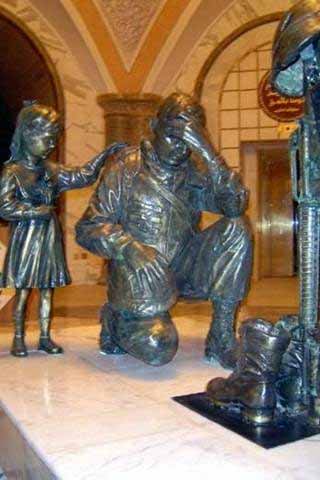
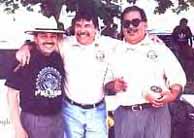
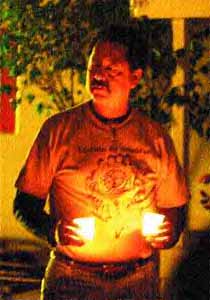
.jpg)
